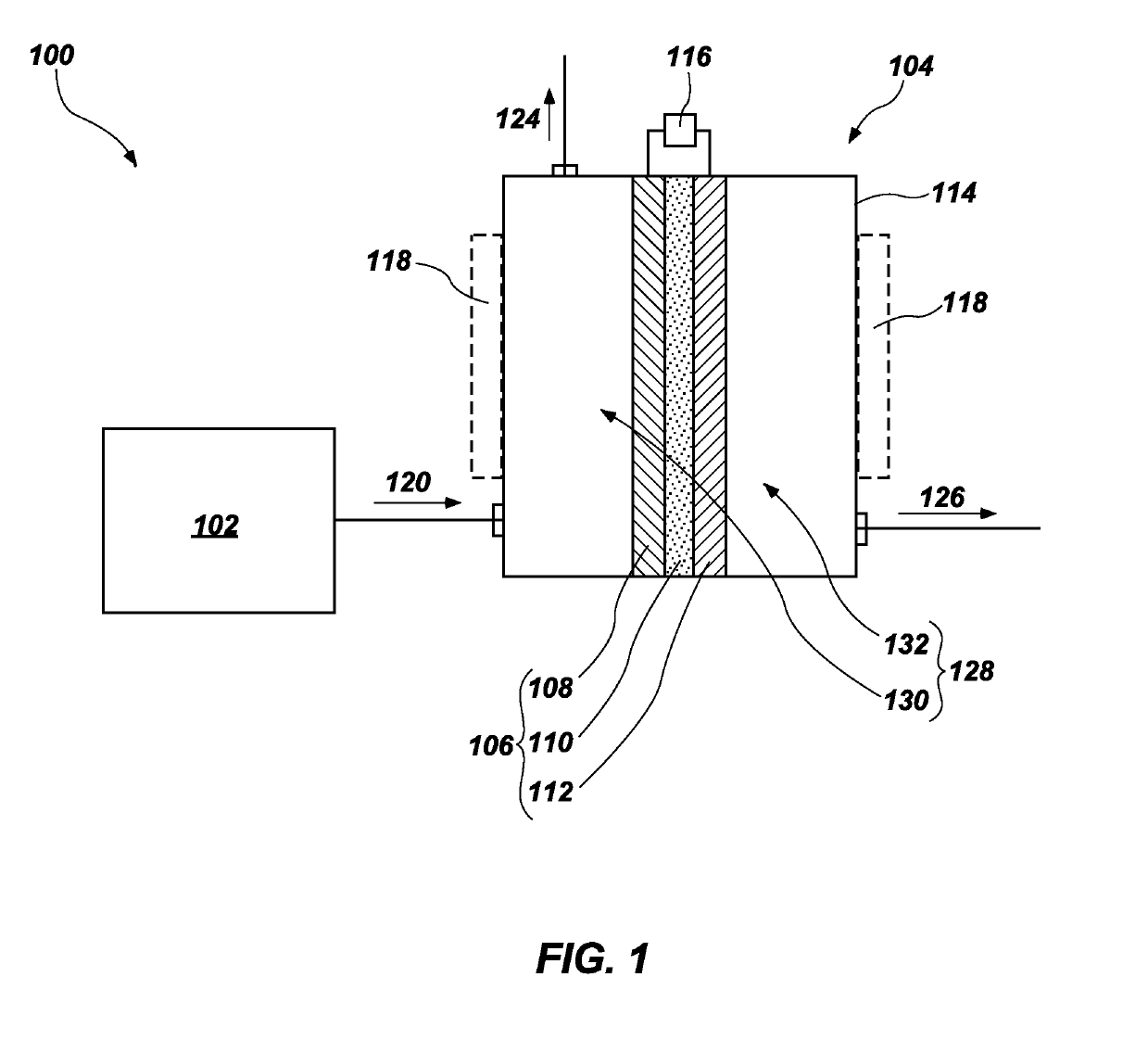Methods for producing hydrocarbon products and hydrogen gas through electrochemical activation of methane, and related systems and electrochemical cells
a technology of electrochemical activation and hydrocarbon products, which is applied in the production of electrolytic organic products, electrolysis components, electrolysis coatings, etc., can solve the problems of unsatisfactory energy expenditure, thermal energy expenditure, environmental impact, etc., and achieve the effect of accelerating reaction rates, accelerating reaction rates, and accelerating reaction rates
- Summary
- Abstract
- Description
- Claims
- Application Information
AI Technical Summary
Benefits of technology
Problems solved by technology
Method used
Image
Examples
Embodiment Construction
[0010]Methods, systems, and apparatuses for producing (e.g., co-producing) hydrocarbon products and hydrogen gas (H2(g) through electrochemical activation of CH4 are disclosed. In some embodiments, a method of producing hydrocarbon products and H2(g) includes directing CH4 into an electrochemical apparatus including an electrochemical cell therein. The electrochemical cell comprises a positive electrode (anode), a negative electrode (cathode), and a proton-conducting membrane between the positive electrode and the negative electrode. The proton-conducting membrane includes an electrolyte material having an ionic conductivity greater than or equal to about 10−2 Siemens per centimeter (S / cm) at one or more temperatures within a range of from about 150° C. to about 600° C. The positive electrode includes a catalyst material formulated to accelerate CH4 deprotonation reaction rates to produce CH3+, H+, and e− from CH4, and also formulated to accelerate coupling reaction rates (e.g., at ...
PUM
| Property | Measurement | Unit |
|---|---|---|
| temperatures | aaaaa | aaaaa |
| ionic conductivity | aaaaa | aaaaa |
| temperatures | aaaaa | aaaaa |
Abstract
Description
Claims
Application Information
 Login to View More
Login to View More - R&D
- Intellectual Property
- Life Sciences
- Materials
- Tech Scout
- Unparalleled Data Quality
- Higher Quality Content
- 60% Fewer Hallucinations
Browse by: Latest US Patents, China's latest patents, Technical Efficacy Thesaurus, Application Domain, Technology Topic, Popular Technical Reports.
© 2025 PatSnap. All rights reserved.Legal|Privacy policy|Modern Slavery Act Transparency Statement|Sitemap|About US| Contact US: help@patsnap.com

